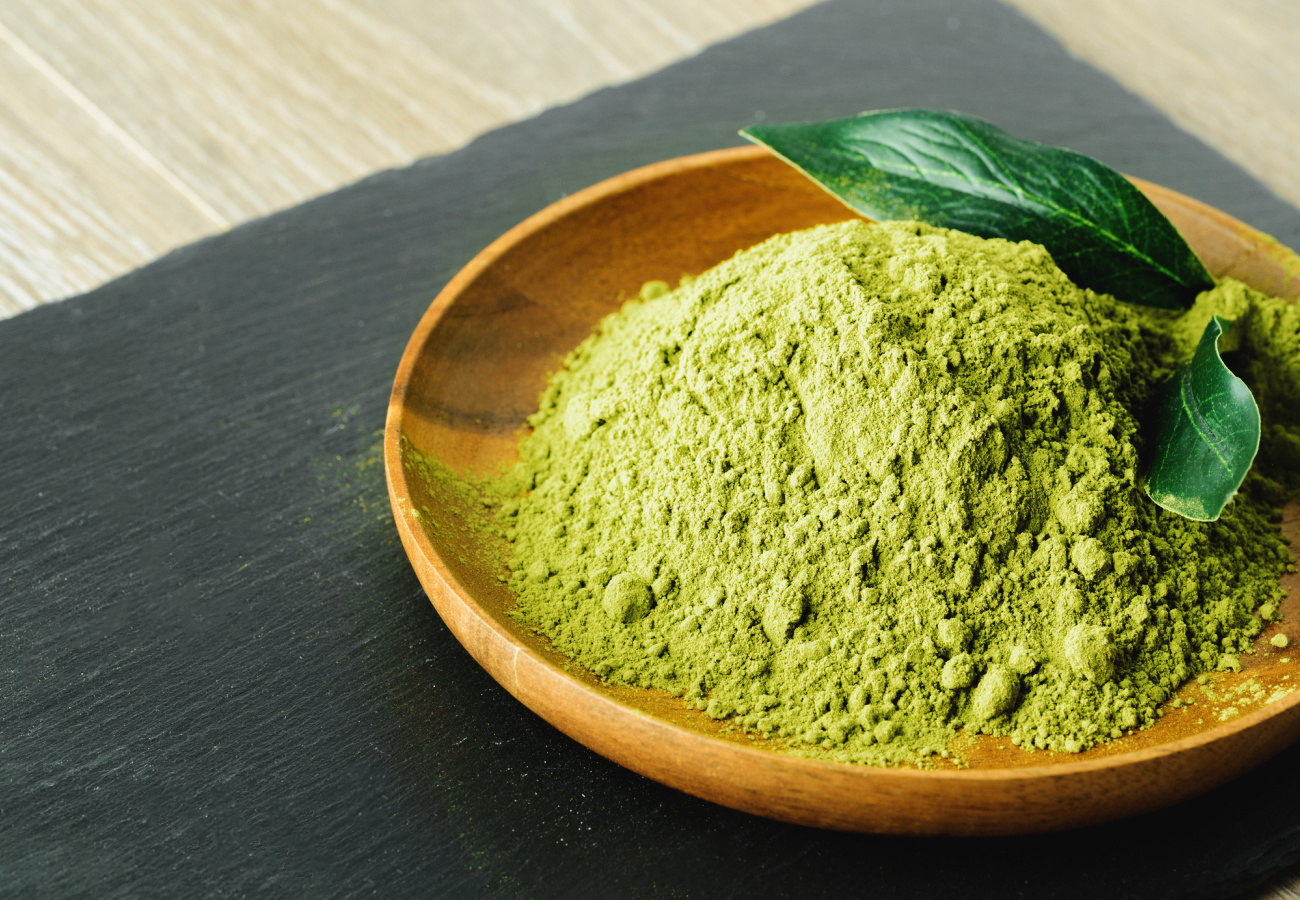Matcha has seen a surge in popularity worldwide, thanks to its unique flavor profile and health benefits. But if you are unfamiliar with this vibrant green powder, you may have questions about what it is and what it tastes like.
What Is Matcha, and What Is Matcha Made of?
Matcha is a type of Japanese green tea powder. It’s made from the leaves of the Camellia sinensis plant, the same species you use to make black, oolong, and other types of tea. But matcha differs in the way it’s cultivated and processed.
About a month before harvest, the tea plants are shaded to increase their chlorophyll levels and produce a vibrant green color. After harvest, the leaves are steamed, air-dried, destemmed, deveined, and ground into a fine powder using granite stone mills.
This detailed process results in a tea powder that contains the whole leaf, making it a more potent source of nutrients compared to steeped green tea. Matcha contains high levels of antioxidants, caffeine, and L-theanine, an amino acid that promotes relaxation and mental alertness.
Matcha Flavor
Matcha tea tastes like a blend of sweetness, bitterness, and umami. The initial taste of matcha is grassy and a bit bitter, but this is followed by a nutty sweetness that arises from the natural amino acids in the tea leaf. The umami flavor, often associated with mushrooms, comes from the L-theanine. The overall taste can vary depending on the grade of matcha and its preparation, but it’s this complex layering of flavors that makes matcha a unique beverage.
Matcha Texture
Because matcha is a ground powder, it has a smooth, almost velvety texture when you whisk it with hot water. Matcha doesn’t separate from the water but forms a suspension. This suspension creates a thicker drink than steeped tea, and it coats your palate. A high-quality matcha will feel ultra-fine and silky, but a lower quality one might feel grainy.
Factors that Affect the Flavor of Matcha
There are several factors that can influence the flavor of your matcha tea:
-
Quality of the matcha
High-quality matcha often has a smooth, mellow taste with a slight sweet aftertaste. Lower-quality matcha can have a bitter taste.
-
Preparation method
The temperature of the water used to prepare matcha tea can affect its flavor. Using boiling water may result in a bitter taste, while cooler water (around 160 to 175 degrees F) helps to bring out the sweet and umami flavors of the tea.
-
Water-to-powder ratio
Adjusting the water-to-powder ratio can change the intensity and balance of flavors in your cup. Using less powder and more water will result in a lighter and thinner tea. Using more powder and less water will result in a creamier and more intense tea.
-
Age of the matcha
As matcha ages, it can lose its vibrant color and some of its flavor. Fresh, well-stored matcha will have a more appealing taste compared to older or poorly stored matcha.
-
Region and growing conditions
Matcha can vary in flavor depending on the region in which it is grown and the specific growing conditions of that year.

Leave a Reply